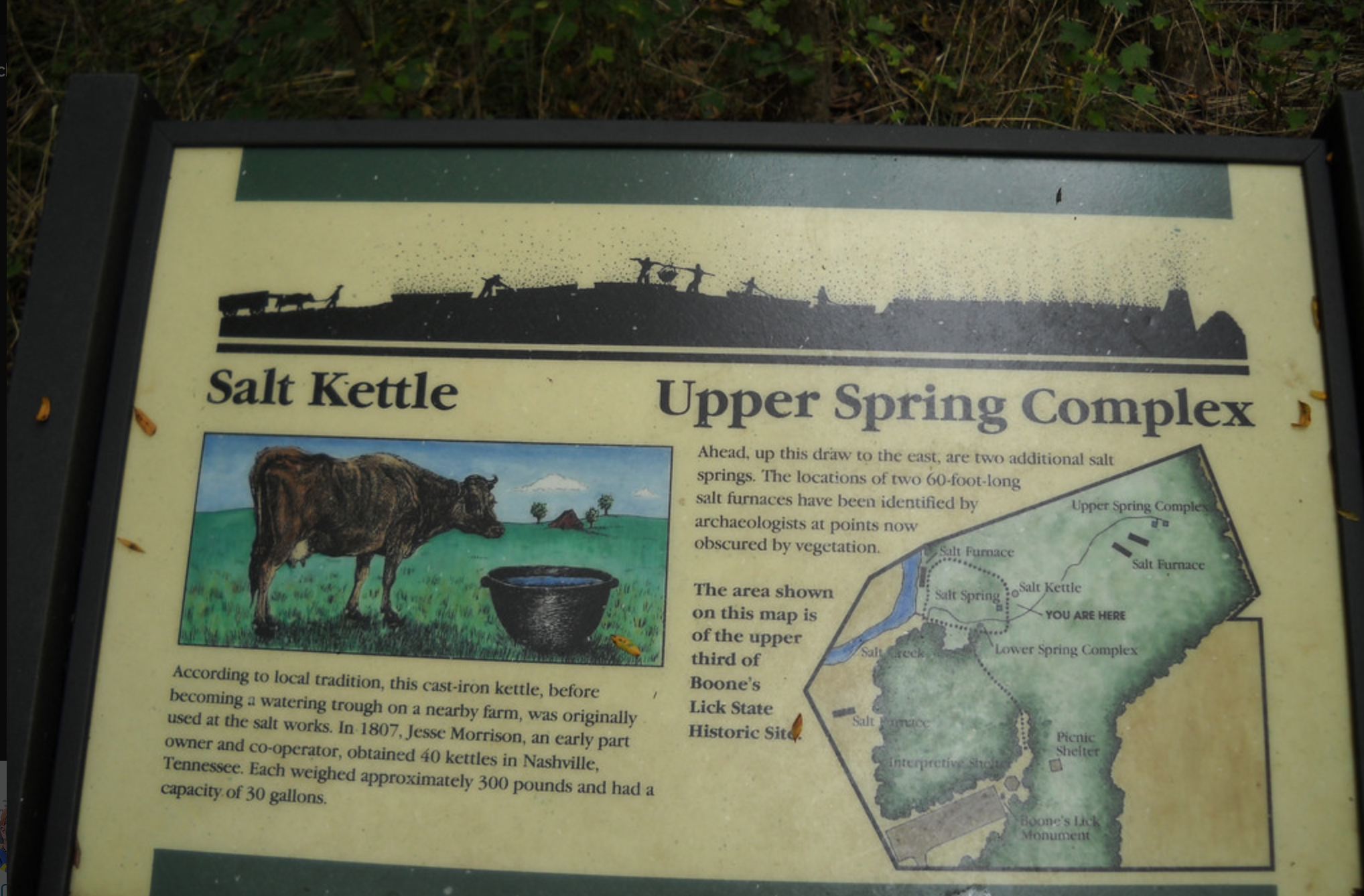Last updated: June 1, 2018
Article
Salt and the Lewis and Clark Expedition

Photo: Creative Commons: CC BY-SA 2.0
Travel farther west along the Missouri River, near Columbia, and you’ll find the area where his sons left a bit of their legacy. This is the site where, on June 6, 1804, William Clark noted the water was so salty that “one bushel of water is said to make 7 lb. of good Salt.” Daniel Morgan Boone and Nathan Boone settled in 1805 and formed a partnership with James and Jesse Morrison to produce salt.
In pioneer times, salt was indispensable for preserving meat and tanning hides. The countryside around this salt spring was considered ideal for settlement and by 1810 had acquired the name “Boone’s Lick Country.” Today, you’ll find it’s a Missouri State Historical Site, about 40 miles northwest of Columbia.
To learn more, go to: https://mostateparks.com/park/boones-lick-state-historic-site.
Lewis and Clark NHT Visitor Centers and Museums
This map shows a range of features associated with the Lewis and Clark National Historic Trail, which commemorates the 1803-1806 Lewis and Clark Expedition. The trail spans a large portion of the North American continent, from the Ohio River in Pittsburgh, Pennsylvania, to the mouth of the Columbia River in Oregon. The trail is comprised of the historic route of the Lewis and Clark Expedition, an auto tour route, high potential historic sites (shown in black), visitor centers (shown in orange), and pivotal places (shown in green). These features can be selected on the map to reveal additional information. Also shown is a base map displaying state boundaries, cities, rivers, and highways. The map conveys how a significant area of the North American continent was traversed by the Lewis and Clark Expedition and indicates the many places where visitors can learn about their journey and experience the landscape through which they traveled.






